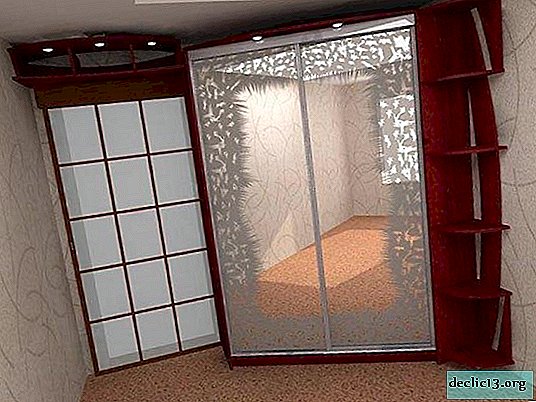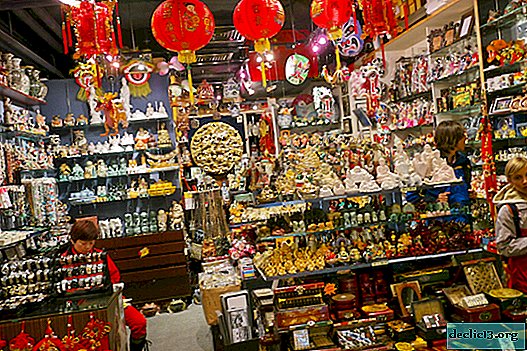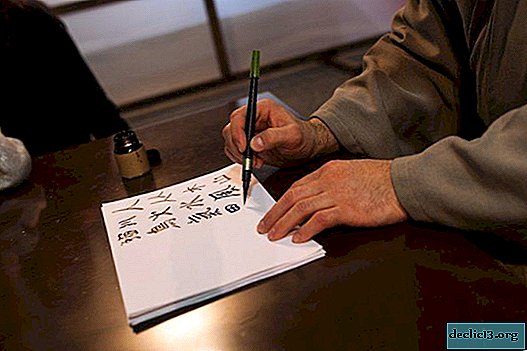Athens in 3 days: how to have time to see everything
Athens, like no other European capital, has an ancient and rich history, and the question of whether there is something to see in Athens does not arise a priori. Attractions in the Greek capital in abundance. But the time for tourists who came from the resort coast to "rest" from a beach holiday and see the ancient city, which survived its heyday more than two millennia ago, is sometimes very small.
Athens in three days
To answer the question of what you can see in Athens in 3 days, we will take the advice of the traveler, writer and photographer Heidi Fuller-lava, for whom Greece and its capital are a special passion and hobby.

The first day
We will not break traditions, and the city tour will begin with an interesting place - the Monastiraki region (Μοναστηράκι). This is what most tourists and visitors to Athens do. Then we will get acquainted with the New Museum of the Acropolis, and we will meet early evening, already walking among the historical ruins of the Acropolis itself. We will admire the panorama of the city and the surrounding area from the height of the hill, capture the sights of Athens in the setting sun on our cameras. Panoramic photos of the sights on the hill are winning.
Although there may be a slightly different schedule for your first day in Athens. In the hottest summer months, it is wiser to go to the Acropolis from early morning and spend the evening walking around Monastiraki.
This square at the exit from the metro is more like a forecourt. A market on the street. Ifesta is the attraction point of thousands of tourists daily. The noise, din, screams of merchants, right there - coffee houses and small fast-food restaurants.

Here everyone can find what they want: souvenirs, jewelry, antique antiques, cute trinkets, antique furniture ... And if you don’t need anything, just wander around this famous flea market. And be sure to meet what you lack, and be surprised - how could you live without it before?
The market is open from 7:00 a.m. to 7:00 p.m., but many shops open only by 10:00 a.m., the Greeks never rush.
Near the metro you can see the ancient mosque (1759), which now houses the Ceramics Museum, and at the intersection with Ermu Street, the Church of the Blessed Virgin Mary built in the 19th century. He used to be Catholic. Both buildings have an interesting history.
New Acropolis Museum
The life of the city from antiquity and still revolves around the most famous of the seven hills that surround it. The Acropolis, a witness to the birth and prosperity of the city during the time of ancient Greece, and now rises above Athens, like a stone ship. And on the deck of this ship the structures of the ancient Parthenon are majestically stretched. At the foot of the hill is an amazing museum entirely dedicated to the famous Athenian hill and its history.
According to the rating of Tripadvisor, authoritative in the world of tourism, this Museum takes 8th place among the 25 best in the world.

A few facts from the history and real Acropolis Museum.
- The old museum building (1874) no longer contained all the artifacts that were discovered during excavations in more than the last two centuries. The incentive for the construction of the New Building was also Greece’s long-standing desire to return to the Acropolis the marble sculptures that Lord Elgin brought to Britain.
- To build this unique building (2003-2009), the Greek government needed four architectural competitions for almost forty years: all the time, the construction was hindered by a variety of objective reasons related to geological features and new archaeological finds at the construction site.
- Projects were adjusted to the circumstances. The result was a design of 226 thousand square meters. m on powerful columns. It seems to hang over archaeological finds, exhibits. The exhibits occupy an area of 14 thousand square meters. The rooms are perfectly decorated, and the masterpieces of the old Acropolis seem to soar in space. In the huge halls, light shines and it seems that the building is transparent and without walls. The panorama around the building is also unique.
The exposition is located on three floors, and each has a thematic area.
- "On the slopes of the Acropolis" - on two sides of the huge lobby is an exposition of household utensils, in the middle is a glass sloping floor with reinforcement, the ruins of the old city are visible below.
- The “Archaic Hall” is full of beautiful statues illuminated by natural light. The caritiades from the Temple of Ereikheton are the main wealth of the excavations.
- "Parthenon Lost and Found." Fully dedicated to this temple. Here is the information center, you can watch a film about the history of the Parthenon, which is constantly being shown on the screen.

Interesting! Exhibits from the old museum were transported to the new place by three giant cranes almost two years before the opening of the new Museum in June 2009, although the distance between them is less than half a kilometer.
From the cozy restaurant on the second floor, enjoy views of the Acropolis and other attractions of Athens and the surrounding area.
Attraction hours and cost of visiting:- from April to November every day from 8 am to 8 pm, and on Friday - until 10 pm;
- from November to March inclusive on Tuesday, Wednesday and Thursday from 8 a.m. to 5 p.m., on weekends from 9 a.m. to 8 p.m., and on Friday the same as in the summer season until 10 p.m.
- Weekends: Monday, New Year, Easter, May 1, December 25-26.
- Ticket: 5 euros, children / reduced 3 euros. Children will be very interested here, for them a visit will result in an entertaining quest with prizes.
- The museum is located between the station. Akropoli metro and south hillside. Address: st. Dionysius the Areopagite, 15.
A flat patch of land of only 300 x 170 meters on top of a 156-meter hill in the center of Athens is what the Acropolis (Ακρόπολη Αθηνών) geographically is. He is also called Cecropia (Kekrops) in honor of the legendary king Kekrops, who is considered the founder of the city.

Here time stops running, and you touch history, looking at the same time at the ancient ruins, and at the modern city at the foot. The Acropolis stands in spite of the winds, sea air and millennia .... In his lifetime he has seen a lot, and his story is closely connected with the history of Greece.
The Parthenon and Ereikheton, Propylaea, temples of Zeus, Niki, the theater of Dionysus, nearby the ancient Agora - these and other ancient buildings create an architectural ensemble of indescribable beauty. It is visible in Athens from anywhere in the city.

The ancient appearance of the settlement began to be restored at the end of the 19th century, with the acquisition of independence by Greece. It was possible to dismantle and liquidate all the buildings of the late period, re-lay several churches. On the Acropolis slopes, copies of sculptures are now standing, and everything that has been preserved of the original is on display at the Museum.
At the beginning of the 19th century, many valuable examples of ancient Greek art appeared in Britain, and there is still debate whether Lord Elgin robbed and illegally removed priceless monuments from Greece, or, conversely, saved them from final destruction by the local population.
Schedule attractions and ticket prices:- in the summer: Monday to Friday from 8 a.m. to 6:30 p.m., on weekends and holidays from half past eight in the morning until 2:30 p.m.
- in winter: Monday to Friday from 8 a.m. to 4:30 p.m., on weekends and holidays from half past eight in the morning to 4:30 p.m.
- Tickets: 20 euros, children and preferential 10 euros. Valid for 5 days and allow you to see many of the temples of the Acropolis and the agora on two slopes.
The Acropolis in Athens can be viewed independently, using a free map (including in Russian). Cards are in travel agencies, at the racks at the hotel, at the airport, at the stops of sightseeing tourist buses. You can also buy a more solid guide in the shops in Plaka or Monastiraki for 5 euros.
And you can hire a Russian-speaking guide who will tell and show everything you need to see. Only walking shoes should be comfortable, and on hot summer days, be sure to bring along a supply of water and sun protection for the head and eyes. Water supply can be replenished during the inspection, there are sources of clean drinking water.
Second day
Program: first, the most visited museum in Greece and Athens, founded by a grateful son in honor of his father, then a walk through the ancient Plaka district and at the end of the day, a pleasant stay in the hammam.
Benaki MuseumAs a private museum began operating in 1931. Its founder is Anthony Benakis, who opened his museum in honor of the memory of his father, businessman and famous politician Emanuel Benakis, mayor of Athens in the 20s of the last century. The founder managed the institution until 1954, and before his death he bequeathed the entire collection to the state.

The exhibits here are objects of Greek art from prehistoric times to the present day. The collection is amazing and everything you see will help you make an exciting journey through time.
Here are exhibited and paintings by the artist El Greco, there is even a separate room, and in total in the collection of 6 thousand paintings by different artists and eras. The interiors of the museum themselves are also wonderful, it is located in a beautiful mansion.

At the beginning of this century, a collection of Asian art owned by the museum, namely: Chinese porcelain, children's toys, exhibits of Islamic art and some others, were allocated to separate satellite branches and opened in other areas of the city.
It has its own library, workshops for the restoration and conservation of museum exhibits, and various thematic exhibitions are often held. There are 25 thousand unique originals of photographs and 300 thousand negatives in the archive of sights.
On the roof there is a cafe with a beautiful view of the city.
- Location: Art. Metro Evangelismos, corner 1 Koumbari St. and Vas. Sofias Ave. The museum from the central Syntagma square along the Parliament building can be reached on foot in 5-7 minutes.
- The central office on Sunday is open from nine in the morning until 3:00 in the morning, until 23:30 on Thursday, and until 17:00 on Friday, Saturday and Wednesday. Weekends: Monday, Tuesday and holidays.
- Ticket: 9 euros, children's and preferential - 7 euros, for all temporary exhibitions 5-7 euros. Admission is free on Thursday.
In the shadow of the hill, on which the main attraction of Athens is located, the old district of Plaka is sheltered. Take a walk in its picturesque streets, go into a small uzteria, sit in the fresh air, taste traditional Greek dishes. This is quite feasible in summer and winter. And especially good here in the evening.

Plaka is a typical example of metropolitan Greek life, vibrant and fussy.
Hamman Baths - Hammam (Λουτρά)
The second day of walks in Athens is drawing to a close, it’s time to relax a bit not only with your soul, but also with your body. Go to the hammam, they are not only in Turkey, but also in Greece. A Turkish bath can be found right here in Plaka, here are a couple of addresses:
- Tripodon 16 & Ragawa
- 1 Melidoni & Agion Asomaton 17
Trust in bathing professionals, relax and relieve fatigue, feel after the procedures how soft and elastic your skin has become. After washing you will be treated to tea and sweet Turkish delight.
- The baths are open from Monday to Friday from 12:30, and on weekends from 10:00 in the morning until ten in the evening.
- Admission price is 25 euros. Pleasure is not cheap, but worth the feedback from visitors.
Day three
Today we will visit the Cycladic art museum, which, for sure, many will hear for the first time. Having emerged from the museum halls, we will climb the funicular to the highest observation deck of Athens and end our journey in Gazi - the new Athens technopolis.
Museum of Cycladic ArtThis place popularizes the art and ancient culture of the Aegean Sea and the island of Cyprus. The emphasis in the exhibits is on artifacts from the Cyclades (3 millennium BC), most of which are ancient ceramic vessels and marble figures. The exposition also has Mycenaean amphoras and sculptures.

In the late 80s, the collection of Nicholas and Dolly Gulandris was presented at the Benaki Museum, then it was exhibited at the world's largest exhibition centers, and in 1985, after the death of Nicholas, a name museum was opened, which bears the name of the founder (project of architect Ioannis Vikelas).
The collection is growing, and an extension has already been made to the 4-story building. The already interesting exposition is complemented by an interactive presentation of information. Often held exhibitions. The attraction is located very close to the Benaki Museum.
Take your children with you, they will not get bored here.
- Address: 4 Douka Neofitou.
- Hours: daily except Tuesday.
- Ticket price: for adults - 10 €, on Monday - 7 €, for students, youth 19-26 years old and senior citizens admission 7 € on all days of the week.
Climb this green mountain and you will not regret it. This is the highest (270 m) of the 7 main observation platforms of Athens. The hill is also called Lykavittos. He is in Kolonaki, near the Acropolis, the beginning of the ascent from the station. Metro Evangelismos.

Both from the Eiffel Tower Paris and from here all Athens will be in your palm, right to the sea. Binoculars are also installed on the observation platform. Wonderful view of the Acropolis, which is only 500 meters away. From here you can see the amphitheater, where at different times stars of Greek music and famous world performers performed. Tourists climb the mountain also because of the wonderful views during sunset to take photos of Athens and the surrounding area with their own hands.
There is a restaurant, a pizzeria and a small cafe. The chapel of St. George, made in the Byzantine style.

You can climb Lycavittos:
- by taxi for 10-20 euros,
- by cable car for 7 euros in both directions, 5 euros - in one direction (from 9:00 to 02:30).
- The interval of the funicular movement is 30 minutes, during peak hours - every 10-20 minutes.
But the cabins are almost closed and especially spectacular views during the raising do not wait. Experienced travelers know the trails and walk, they say that the walk is not particularly tiring even with children. Naturally, shoes, as everywhere else on foot should not be model, but comfortable sports.
All prices on the page are for April 2018.
Gazi - Gazi (Γκάζι)This is an area in the old city, bordering Kerameikos and the Acropolis. For more than a hundred years a gas processing plant has been working here, thanks to it the district got its name. It was always dysfunctional, during the crisis in Ghazi many Muslims settled here, but they did not cause special inconvenience to the authorities and neighbors in other areas of the city.

At the turn of the century, as a result of reconstruction on the site of factory facilities, a huge (30,000 sq. M.) Industrial park grew, and this place turned into a new cultural and entertainment center of the Greek capital.
The Technopolis Museum of Modern Art hosts seminars, exhibitions and conferences, concerts and colorful festivals of various thematic orientations. The complex has a museum dedicated to Maria Callas, a great opera singer, and many buildings bear the names of Greek poets.

In modern Gazi, something interesting happens every day. This is where the Jazz Festival and Athens Fashion Week take place. In Athens, there are many examples of street art, but in Gazi graffiti is especially common, whole streets and quarters are skillfully painted.
There are many different youth and theme clubs, restaurants, most of them work at night. But the legacy of the past has not yet completely outlived itself, and, deciding on nightly entertainment, you need to be extremely careful. It’s better not to go to such events alone.
- Getting to Gazi is simple - Art. metro Kerameikos.
Here are the main attractions of Athens. And finally, leaving the Greek capital, right here in Gazi, you have the opportunity to muffle the violent bursts of emotions of recent days. Stop by the Kerameikos, the oldest Athenian cemetery for an hour.It used to be the border of an ancient settlement.
And immediately the noise of the big city will remain far, far away, and in the contemplation of ancient statues, time will freeze for you. A good reason to calm down before the road, to rethink what he saw in these three days. And do not be surprised if you meet a couple of large turtles under the olive trees, they like to relax here.
Sights of Athens on the map in Russian.

















